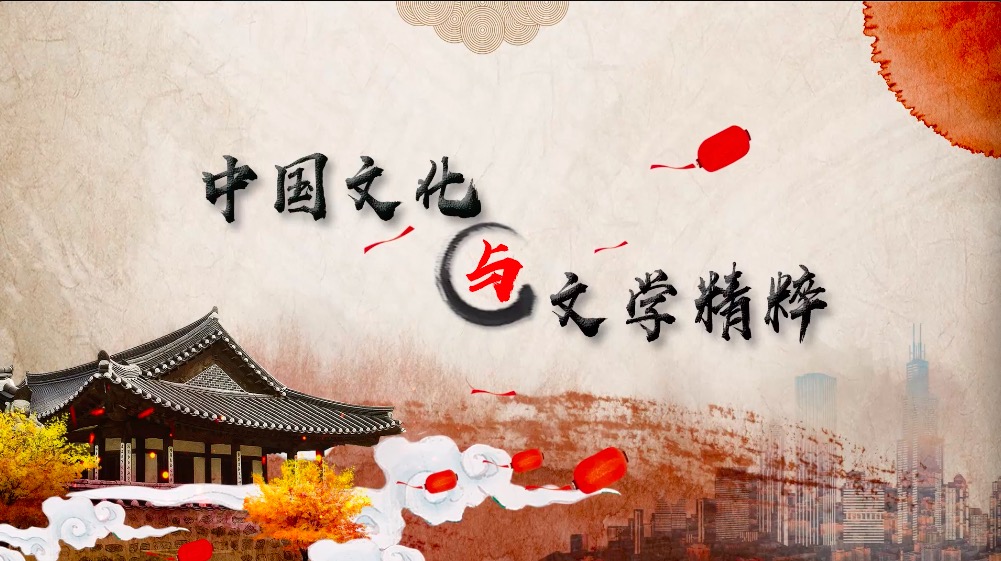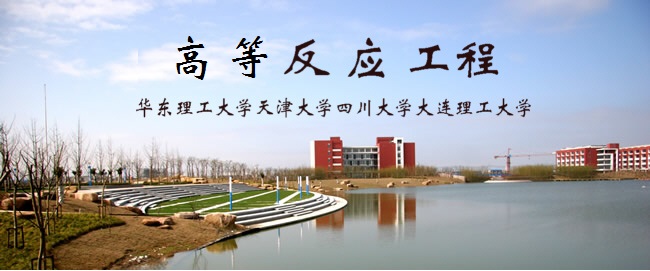
当前课程知识点:英语电影与文化 > Part I Form and Narrative Unit 1 Film Form I. > 1.3 Mise-en-scène: lighting > Video
In this section, we will focus on lighting(灯光).
在这一讲,我们将重点讨论灯光的运用
If you have taken photos before, then you might know
如果你以前拍过照片,你就知道
the importance of lighting in composition and meaning.
灯光在构图和表达意义上的重要性
Much of the impact of an image comes from its manipulation of lighting.
灯光的控制会对图像产生巨大影响
In cinema, lighting is more than just illumination(照明)
在电影中,灯光不仅仅是
that permits us to see the action.
能让我们看到行动的照明
Lighter or darker areas within the frame help to create
框架内的明暗区域
the overall composition of each shot
有助于构建每个镜头的整体组成
and therefore guide our attention to certain objects and actions.
进而引导我们注意到特定的物体和动作
A brightly illuminated area might draw our eye to a certain key gesture
亮光可以让我们的目光关注到某个关键的动作
while a shadow may conceal a detail to create suspension.
而阴影则能掩饰一个制造悬疑效果的细节
Lighting shapes objects and people
灯光塑造人和物
by highlights(高光)and shadows(阴影).
是通过光和影
A highlight is a patch of relative brightness on a surface.
强光指一道光投射在表面
Take a shot from the film Gone with the Wind for example.
以电影《乱世佳人》为例
This shot takes place in a hospital where Scarlett and her cousin
这个是一个医院的镜头,斯嘉丽和她的表妹
Melanie work to help wounded soldiers from the American Civil War.
梅兰妮在那里帮助美国内战中受伤的士兵
Parts of their faces display highlights, while other parts are in shadows.
他们脸庞部分显示高光,而其他部分在阴影中
There are two types of shadows, namely
阴影有两种类型
attached shadows(相连阴影) and cast shadows(投射阴影).
即相连阴影和投射阴影
An attached shadow appears when light fails to illuminate
所谓相连阴影,是指一个物体的某部分
part of an object because of the object's shape or surface features.
因其形状或表面特征,挡住了其他部分的光源
Like in the earlier picture, the two women stand by a candle in a
就像之前的照片一样,两个女人站在黑暗的房间里的蜡烛旁
darkened room, patches of their faces and bodies fall into darkness.
他们的脸和身体都陷入了黑暗中
This is attached shadow.
这就是相连阴影
The candle also projects a shadow on the wall behind.
蜡烛还在后面的墙上投下影子
This is called cast shadow, because their bodies block out the light.
这叫投射阴影,因为他们的身体挡住了光
As this example shows, highlights and shadows help to
如此例所示,光影有助于我们
create our sense of a scene’s space(空间).
产生一种场景的空间感
Like in this picture, the cast shadows on the wall
就像这张照片一样,墙上投下的阴影
imply an entire hospital.
暗示了整个医院的空间
Lighting can also shape a shot’s overall composition.
灯光也可以塑造一个镜头的整体构成
We will still use the same shot from Gone with the Wine as an example.
我们依然用影片《乱世佳人》里的镜头举例
The two women, side by side, are placed in the foreground
两个女人被并排放置在前景
whereas their shadows are casted on the wall
而她们的阴影投在墙上
taking up almost the same amount of space as the real figures.
占据了几乎与真实人物相同的空间
This balance in size, though not in illumination
这种大小的平衡,虽然不在灯光里
implies the sisterhood the two women shared during war time
却暗示了这两个女人在战争期间的姐妹关系
even though they love the same man.
即使她们爱着同一个男人
Also, the cast shadow
此外,投射阴影
makes it more obvious that the women are both heads down
让这两个人低着头的动作更加明显
as if they were praying.
就像他们在祈祷一样
When analyzing the form, there is one major feature of film
在分析电影的形式时,还有一个主要的电影灯光特征
lighting for us to notice: namely its direction.
需要我们注意:灯光的方向
The direction of lighting refers to the patch of light from its source
灯光的方向,指光线由来源到受光体
to the object.
所经过的路线
we can distinguish between frontal lighting(正面光)
简单来说,光的方向可以分为正面光
sidelighting(侧面光), backlighting(逆光), underlighting(底光)
侧面光、逆光、底光
and top lighting(顶光).
和顶光
Frontal lighting can be identified by its tendency to eliminate shadows
正面光几乎是看不到阴影的
whereas sidelight is used to sculpt the character's features
而侧面光常用来塑造人物的特征
like we see in the example.
如我们在之前提到的例子
Backlighting comes from behind the subject filmed
逆来的光源来自被摄物的背后
like in this shot where the light comes from behind
就像在这个镜头中,光线来自后面
suggesting a burning village.
向观众暗示后面有着一个燃烧的村庄
Underlighting suggests that the light comes from below the subject.
底光指光线来自物体下方
And top lighting has its spotlight shines directly above the subject.
顶光则是让聚光灯直接照射在被摄物之上
As we can see in this shot, the top lighting highlights Scarlett's nose
如以下镜头,顶光突出了斯嘉丽的鼻子
forehead, and most importantly eyes.
额头,最重要的是眼睛
The toplighting ties our eyes to her eyes
顶光将我们的眼睛和她的眼睛系在一起
from which we can infer her happiness and excitement as seeing
从中我们可以推测出
her home not been destroyed.
她看到自己的家没有被摧毁时的幸福和兴奋
To sum up, we are used to ignore the illumination
综上,我们总是忽视
of our everyday surroundings
日常环境的灯光
surroundings, so film lighting is also easy to take for granted.
所以电影灯光也很容易被认为是理所当然的
Yet the look of a shot is controlled smartly by light direction
然而,一个镜头的外观是以灯光的方向
and the manipulation of highlights and shadows. In the next section
光影的来巧妙控制的。在下一讲里
we will look at another element of mise-en-scène
我们将讨论场面调度的另一个元素
that is character appearance.
即角色外观
Thank you for watching.
感谢你的收看
-1.1 Overview
--Video
-1.2 Mise-en-scène: setting
--Video
-1.3 Mise-en-scène: lighting
--Video
-1.4 Mise-en-scène: character appearance
--Video
-1.5 Mise-en-scène: performance
--Video
-1.6 Screen space and composition
--Video
-1.7 Case study
--Video
-Unit1 Questions for discussion
-Unit 1 单元测试
-2.1 Introduction of cinematography
--Video
-2.2 Cinematography: angle of framing
--Video
-2.3 Cinematography: camera distance
--Video
-2.4 Cinematography: mobile framing
--Video
-2.5 Case study
--Video
-Unit 2 Questions for discussion
-Unit 2 单元测试
-3.1 Overview
--Video
-3.2 Openings, closings, and story development
--Video
-3.3 Range of story information: restricted or unrestricted
--Video
-Unit 3 Questions for discussion
-Unit 3 单元测试
-4.1 Overview
--Video
-4.2 Editing and speed of narrative
--Video
-4.3 Chronology and continuity editing
--Video
-4.4 Flashbacks and editing
--Video
-Unit 4 Questions for Discussion
-Unit 4 单元测试
-5.1 Overview
--Video
-5.2 What is semiotics?
--Video
-5.3 Christian Metz
--Video
-5.4 Roland Barthes (Part 1)
--Video
-5.5 Roland Barthes (Part 2)
--Video
-5.6 Case study: 2001: A Space Odyssey
--Video
-Unit 5 Questions for Discussion
-Unit 5 单元测试
-6.1 Overview
--Video
-6.2 Origins of film ideology
--Video
-6.3 Media and technology
--Video
-6.4 Cultural hegemony and counterhegemony
--Video
-6.5 Case study: Star Trek
--Video
-Unit 6 Questions for discussion
-Unit 6 单元测试
-7.1 Overview
--Video
-7.2 Woman and film
--Video
-7.3 Feminist film theory and practice
--Video
-7.4 Case study: Three Billboards Outside Ebbing, Missouri
--Video
-7.5 Masculinity
--Video
-7.6 Queer Cinema
--Video
-Unit 7 Questions for discussion
-Unit 7 单元测试
-8.1 Overview
--Video
-8.2 Race and racism
--Video
-8.3 Stereotypes of racial representation
--Video
-8.4 Whiteness
--Video
-8.5 Case study: Rabbit-Proof Fence
--Video
-Unit 8 Questions for discussion
-Unit 8 单元测试
-9.1 Overview
--Video
-9.2 Edward Said and Orientalism
--Video
-9.3 Cultural Imperialism
--Video
-9.4 Self-orientation
--Video
-9.5 Case study I: Mulan
--Video
-9.6 Case study II: M Butterfly
--Video
-Unit 9 Questions for discussion
-Unit 9 单元测试
-10.1 Overview
--Video
-10.2 Early Background
--Video
-10.3 Jacques Lacan
--Video
-10.4 Laura Mulvey
--Video
-10.5 Case Study: Shutter Island
--Video
-Unit 10 Questions for discussion
-Unit 10 单元测试
-Unit 10 Film and Psychoanalysis
-11.1 Overview
--Video
-11.2 Story
--Video
-11.3 Character: the enigmatic English patient
--Video
-11.4 Mise-en-scène: setting
--Video
-11.5 Narrative
--Video
-11.6 Music
--Video
-Unit 11 Questions for discussion
-Unit 11 单元测试
-Unit 11 The English Patient: Form and Narrative
-12.1 Signs and Symbols
--Video
-12.2 Nationalism in The English Patient
--Video
-12.3 Almasy as the misogynist and Katharine as a feminist
--Video
-12.4 Kip as the Other
--Video
-Unit 12 Questions for discussion
-Unit 12 单元测试





